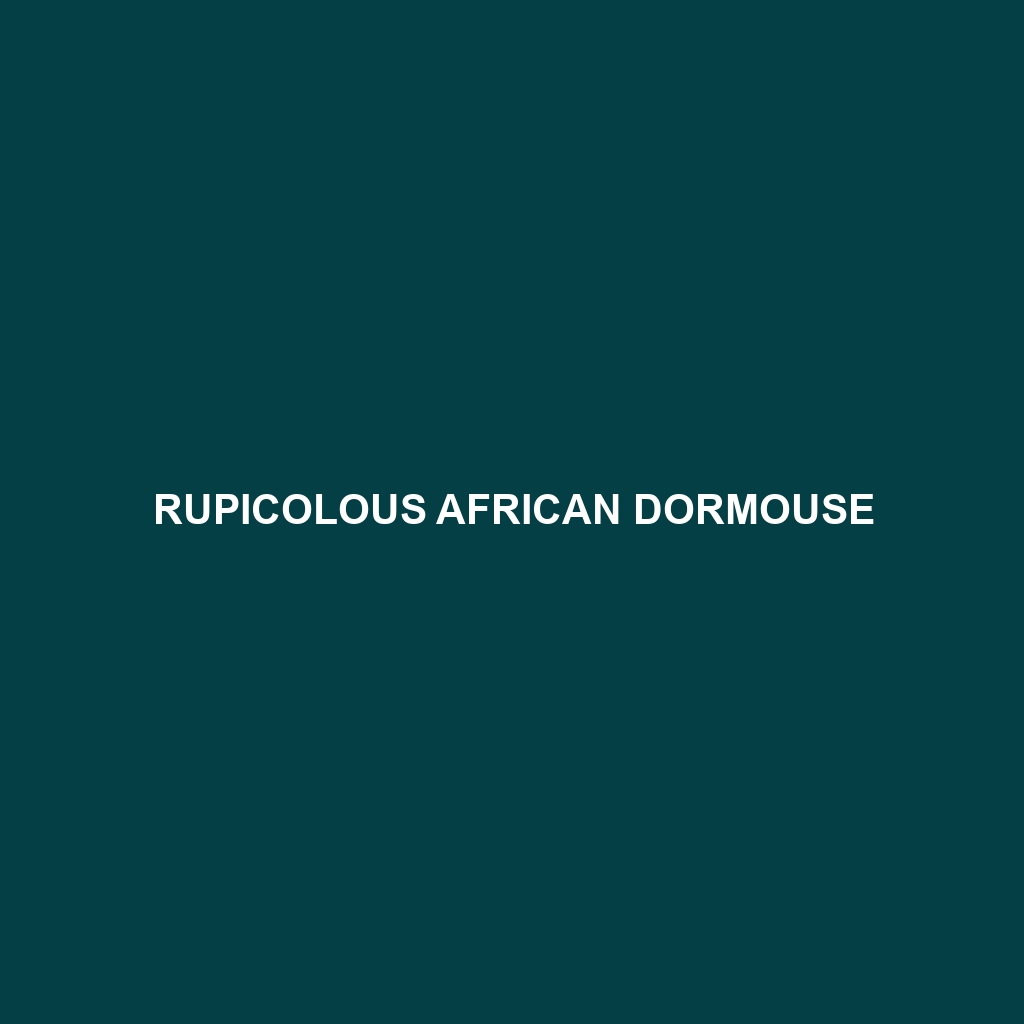Rupicolous African Dormouse: A Detailed Species Description
Common Name: Rupicolous African Dormouse
Scientific Name: Graphiurus murinus
Habitat
The Rupicolous African Dormouse primarily inhabits the rocky terrains of sub-Saharan Africa. They are commonly found in regions such as the savannas, grasslands, and rocky outcrops. This species tends to favor areas with bushy vegetation and close proximity to water sources, which provide both shelter and food.
Physical Characteristics
Rupicolous African Dormice are small, with a typical body length ranging from 8 to 10 centimeters, not including their tails, which can be equally long. Their fur is generally soft and dense, appearing in shades of brown to gray, with lighter underbellies. Notable features include their large, rounded ears and bushy tails, which aid in balance as they navigate rocky environments. Their distinctive whiskers and sharp claws facilitate climbing and foraging.
Behavior
Rupicolous African Dormice are primarily nocturnal, which means they are most active during the night. They exhibit solitary behavior, although they may sometimes be seen in small groups. Their agile movements and adept climbing skills make them proficient at traversing their rocky habitats. Additionally, they are known to communicate through a series of vocalizations that play a role in mating and territory establishment.
Diet
This species is an omnivore, primarily feeding on seeds, fruits, and insects. Rupicolous African Dormice play a significant role in seed dispersal, making them important for the ecosystems they inhabit. Their diet can vary based on seasonal availability, with a preference for softer fruits during the wetter months.
Reproduction
Rupicolous African Dormice breed typically between late spring and early summer, with a gestation period of around 28 to 30 days. A litter usually consists of two to six offspring. The young are born hairless and blind, relying on their mother for warmth and nutrition. Maternal care is extensive, and females demonstrate strong protective behaviors towards their young.
Conservation Status
The conservation status of the Rupicolous African Dormouse is currently listed as “Least Concern” by the IUCN, although habitat loss due to deforestation and human activity poses potential threats. Continuous monitoring is necessary to ensure sustainable populations and minimize risks from environmental changes.
Interesting Facts
One fascinating aspect of the Rupicolous African Dormouse is its exceptional climbing ability. These dormice can navigate complex rocky terrains with ease, often employing their tails for balance. Additionally, they have a unique adaptation allowing them to enter a state of torpor, a hibernation-like condition, during extreme weather conditions to conserve energy.
Role in Ecosystem
Rupicolous African Dormice play a crucial role in their ecosystems as both predators and prey. As seed dispersers, they contribute to plant propagation, promoting biodiversity. Furthermore, they serve as a food source for various birds of prey and larger mammals, highlighting their importance in the food web.
